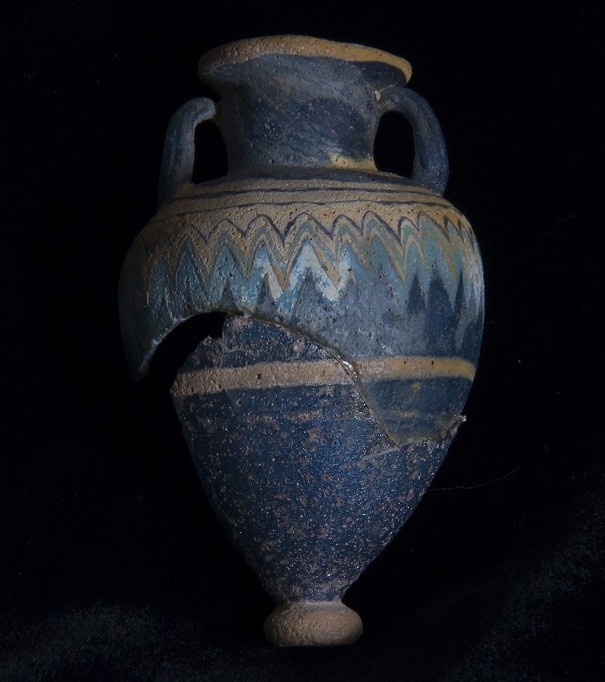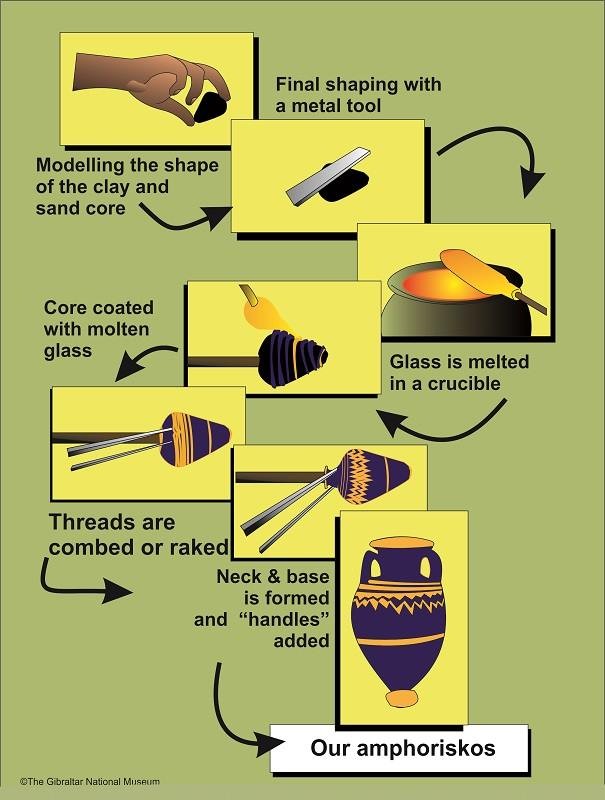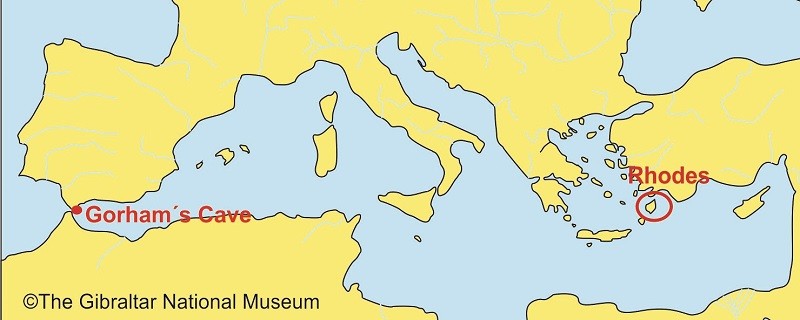Amphoriskos
Amphoriskos
Today we bring you one of our museum’s most iconic items – it has not become our official logo for nothing! We are talking, of course, of a glass amphoriskos found at Gorham’s Cave.
This amphoriskos used to contain perfumed oils and would have formed part of one of the offerings deposited at the cave which was once an important shrine. It was produced using the glassmaking technique known as core-forming.
It dates from the second half of the 5th century BCE and originates from a workshop on the Greek island of Rhodes, which was a very important place in ancient times for the production and commercialisation of these crafts. These Rhodian workshops, which are believed to have been located on the east of the island due to the characteristics of the sands there as well as some archaeological finds, were producing different glass containers from the 6th to the 2nd centuries BCE. Their products were distributed throughout the entire Mediterranean region.
The most complete Latin literary account in relation to glass production corresponds to Pliny the Elder. He wrote about its origins and attributes this to a chance discovery by Phoenician merchants near the Belus River (now the Na’amam River in Israel) [Hist. Nat. XXXI, 191]. Although the Phoenicians were responsible for the distribution of glass products across the Mediterranean, the archaeology confirms that the production of glass predates this period, dating back to as early as the Bronze Age in Mesopotamia.
In order to produce a glass amphoriskos like ours, the following production processes were carried out:
- The general shape the piece was to take, was first moulded out of a mix of clay, sand and water to form the core;
- The core was then attached to one end of a metal rod;
- After drying, the core was then shaped further by filing;
- Ingots of glass were melted in a crucible with a furnace;
- The core was coated with the molten glass, turning the rod and adding decorative threads of different coloured glass by trailing;
- After reheating the glass, the threads were combed or raked with a pointed tool;
- Pincers were used to form the neck and the rim;
- ‘Handles’ were made by adding a small bit of molten glass to each of the sides of the vessel;
- Finally, the rod was removed and the core material scraped out.



Published: March 30, 2020
Other similar VM - Archaeology
18-20 Bomb House Lane
PO Box 939,
Gibraltar
